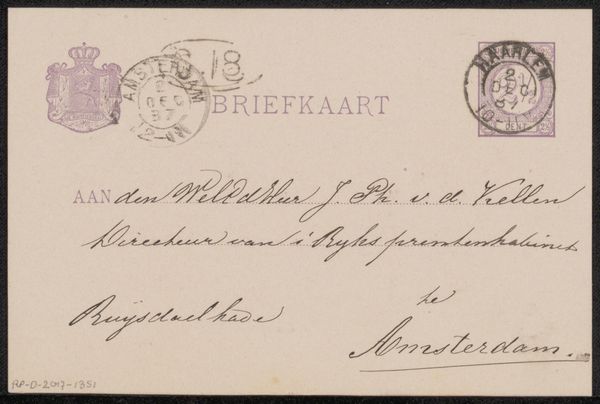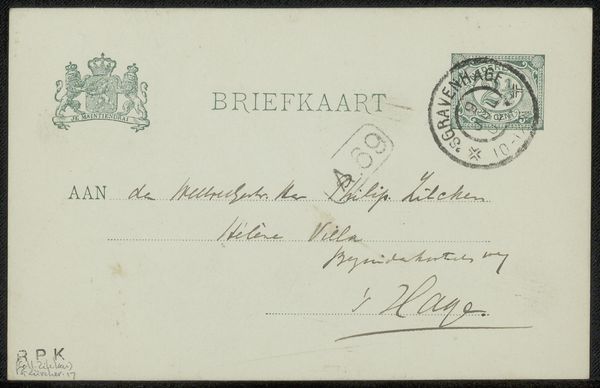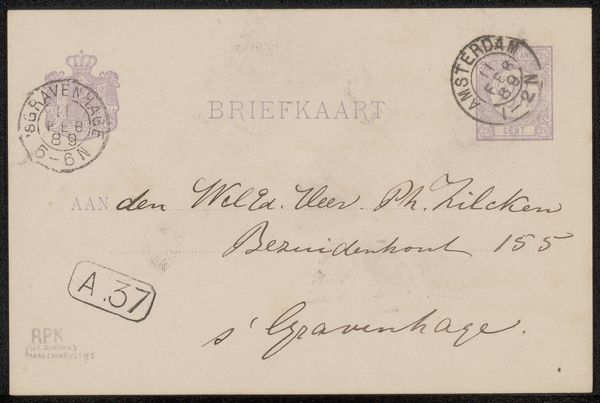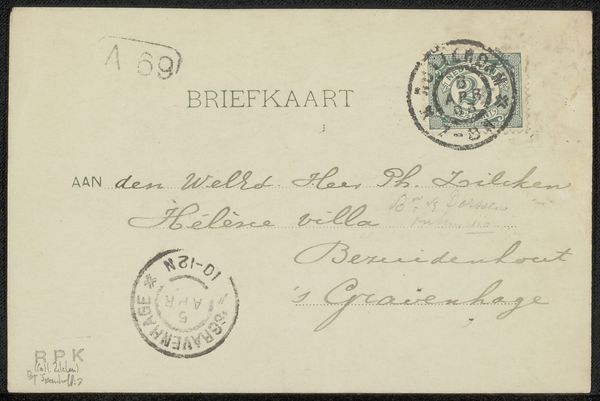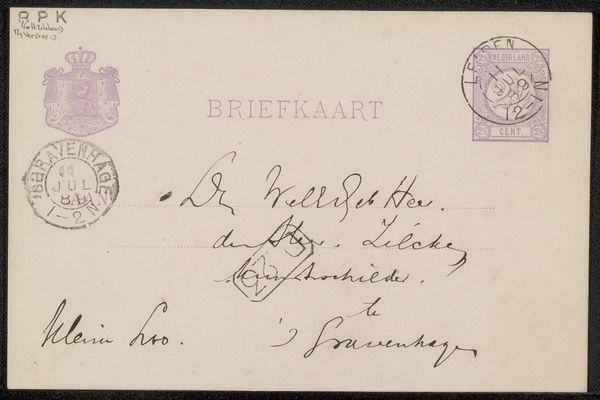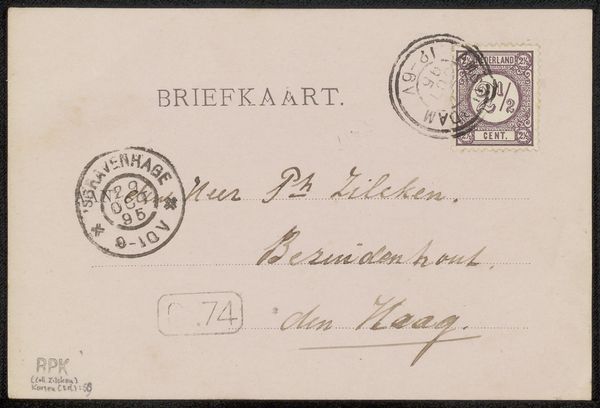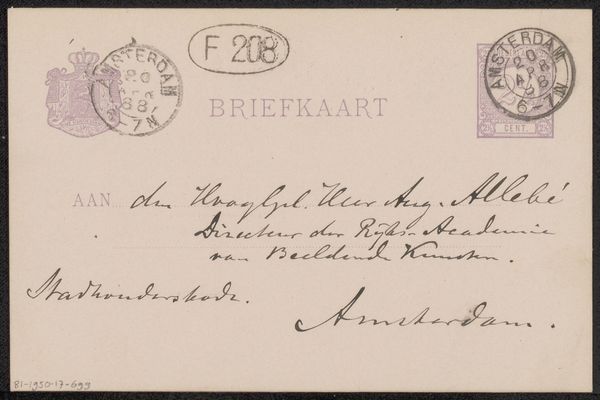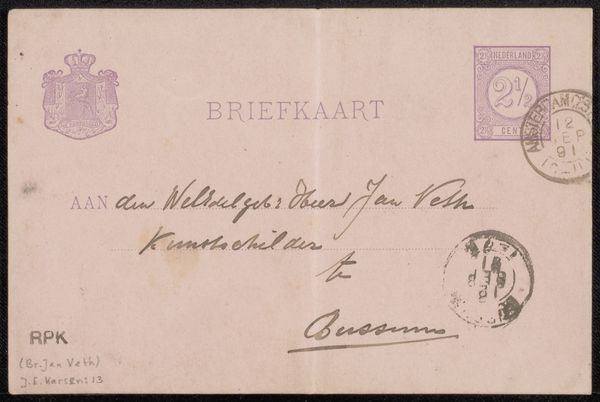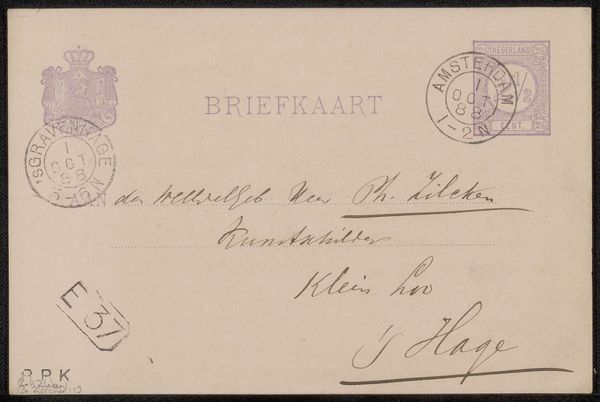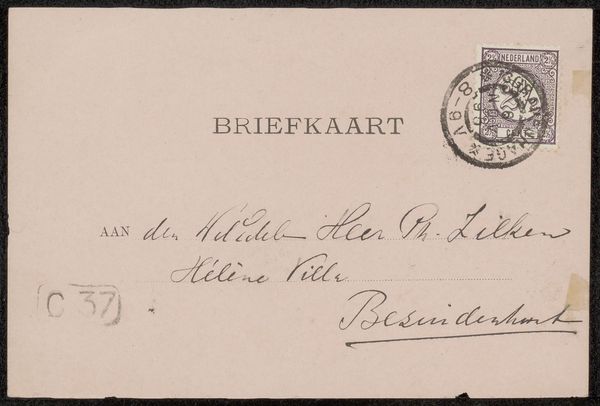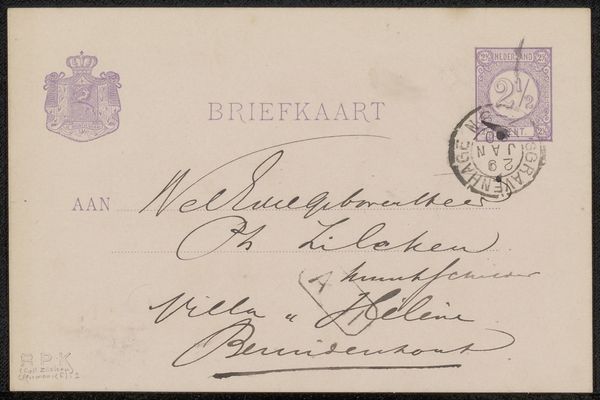
paper, ink
#
portrait
#
pen drawing
#
pen sketch
#
hand drawn type
#
paper
#
personal sketchbook
#
ink
#
ink drawing experimentation
#
pen-ink sketch
#
pen work
#
sketchbook drawing
#
storyboard and sketchbook work
#
post-impressionism
#
sketchbook art
#
calligraphy
Copyright: Rijks Museum: Open Domain
Curator: Looking at this artwork gives me a peculiar feeling of intimacy with a moment long past, despite its mundane subject. Editor: Yes, it has that evocative power. This is a postcard addressed to Philip Zilcken, potentially from 1903, created by Jan Gerard Smits. It is an ink drawing on paper. My first impression is one of faded grandeur; the delicate script suggests a formal message, yet the paper suggests its ephemerality. Curator: It’s the visual language of correspondence, really. Note the formal lettering and the crest; it reflects a very specific, ritualized communication that’s essentially lost in our digital age. The very act of sending a physical message held significant cultural weight. Editor: Absolutely. The social function of letter-writing as a medium is quite intriguing in how it reinforces class and institutional affiliations, as is apparent in the artistic rendering. The very material says something too. Curator: Precisely! Think of the cultural significance of handwriting versus type, or even the type of paper stock someone might select. In a world saturated with ephemeral digital images, physical records such as these carry more historical depth because of their survival. Also, the image speaks a language of a world in transformation as communication gets faster. Editor: It’s also worth considering who Philip Zilcken was – an art critic. A painting is, from the historical perspective, something he helped to shape the public perception of. And he receives a note. A form of communication that will ultimately give way to a newer public art arena with new modes of interaction and commentary. It does hold great power in suggesting that transformative period. Curator: So true! It speaks about more than just one individual’s correspondence; it’s a tangible connection to a lost mode of communicating. The message is not particularly revealing but there is enough to reveal more about society and the changes taking place in it at this time. Editor: A fragment that opens doors to vast questions and changing times.
Comments
No comments
Be the first to comment and join the conversation on the ultimate creative platform.
